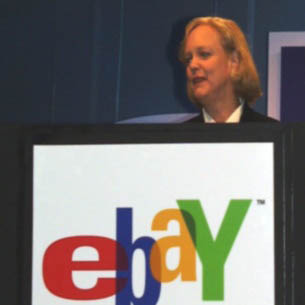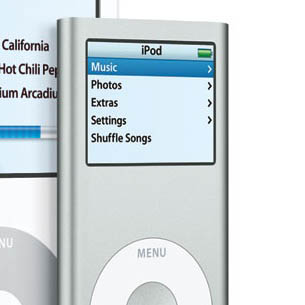
2001: Personal information becomes more secure online
In 2001, Canada began to implement the Personal Information Protection and Electronic Documents Act (PIPEDA), its first comprehensive data privacy act affecting businesses. Among other things, the law requires organizations to obtain consent when they collect, use or disclose personal information and have clear, readily available personal information policies. It was not fully implemented until 2004.

In 2002, e-commerce giant eBay acquired payment site PayPal for about $1.5 billion. Since then, PayPal has become ubiquitous on sites that sell various products or services. In recent years, PayPal’s name has been used in spam and malware schemes, but it is still a trusted method of payment for many consumers. Today, many SMBs use PayPal on their sites.

2003 saw the launch of Apple’s iTunes music store. School district and business IT departments were wary of the program, though, and to date, various organizations don’t allow it to be downloaded on their public computers. Since then, various competitors have come around, but iTunes continues to dominate. This might change in 2011, as Google is rumoured to be launching an Android rival in the coming months.

Tech giant Google went public in 2004, and since then, it has become ubiquitous. In recent years, the company has expanded into cloud and advertising technology and even social media with the purchase of YouTube.
In 2011, Google launched its Get Your Business Online project for Canadian SMBs looking to create greater Web presence.

Though blogging came about as far back as 1998, it wasn’t until about 2005 that it became a mainstream pastime. Individuals, governments and businesses all began to realize the potential of blogging. News organizations also began to use blogs as an addition to journalistic content.
Since then, professional blogging has become a trend and many SMBs use blogs to receive more hits through search engines.

2006: IT sector catches up to the green movement
Though the environmental movement can be traced back to decades ago, 2006 was the start of companies increasingly being pressured to “go green.” One study even suggested that more than 90 per cent of consumers preferred buying from “socially responsible” vendors, including ones that were environmentally-friendly. Following that year, major corporations like Hewlett-Packard and IBM began to promote their green initiatives more heavily.

2007: Businesses take on social media
By 2007, Facebook was ubiquitous among Internet users and Twitter was on the rise as well. Companies began using social media sites like LinkedIn to grow their companies. Today, it is rare for businesses not to use social media in some way to market their products through sales, coupon offerings and contests. With these sites’ rise in popularity, many companies have been forced to implement social media policies among their workers.

With the rising popularity of the iPhone, Apple launched its App Store in the summer of 2008— and despite a crippling recession, many of these apps have seen exceptional success. Thousands of developers worldwide have created apps for Apple’s digital shop, including maps, news aggregators, coupon applications and games. By 2010, consumers and businesses alike were finding compelling ways to use apps to their advantage.

2009: Companies move toward UC products
In late 2008, Gartner Inc. predicted that Unified Communications technologies would be a growing trend in 2009. Within that year, several companies launched or improved their UC products and services. Some companies and consumers are looking towards VoIP services like Skype to reduce costs among their mobile workforces.

Though cloud computing and cloud programs had been developed prior to 2010, that year saw increases in cloud offerings for businesses, especially SMBs with little to no in-house IT support. In the fall of 2010, Microsoft launched Office 365, targeted at both SMBs and enterprises looking to use the cloud effectively for business. Today, companies’ major challenge is addressing security concerns surrounding cloud solutions, though some studies suggest that SMBs will be rapidly adopting cloud offerings in the next few years.

Only a few months into the year, 2011’s theme seems to be the tablet race. It’s been heating up since the launch of the iPad in 2009, but only in the last months have Apple’s competitors- traditional and new- started getting in on the action. Since late 2010, we’ve scene the launch of RIM’s Playbook, the iPad 2, Acer’s Iconia Tab A500 and the Dell Inspiron duo, among others. So far, the iPad remains the dominant choice among consumers, but with more manufacturers targeting businesses with their tablet software and apps, the competition is growing.
❮ ❯




